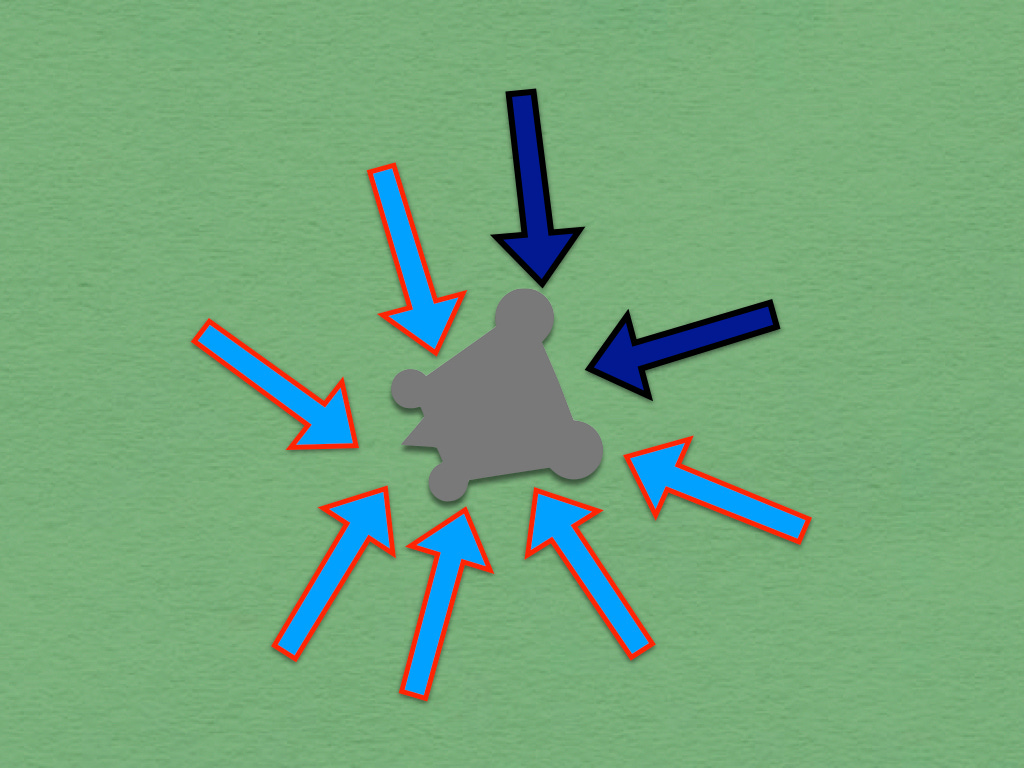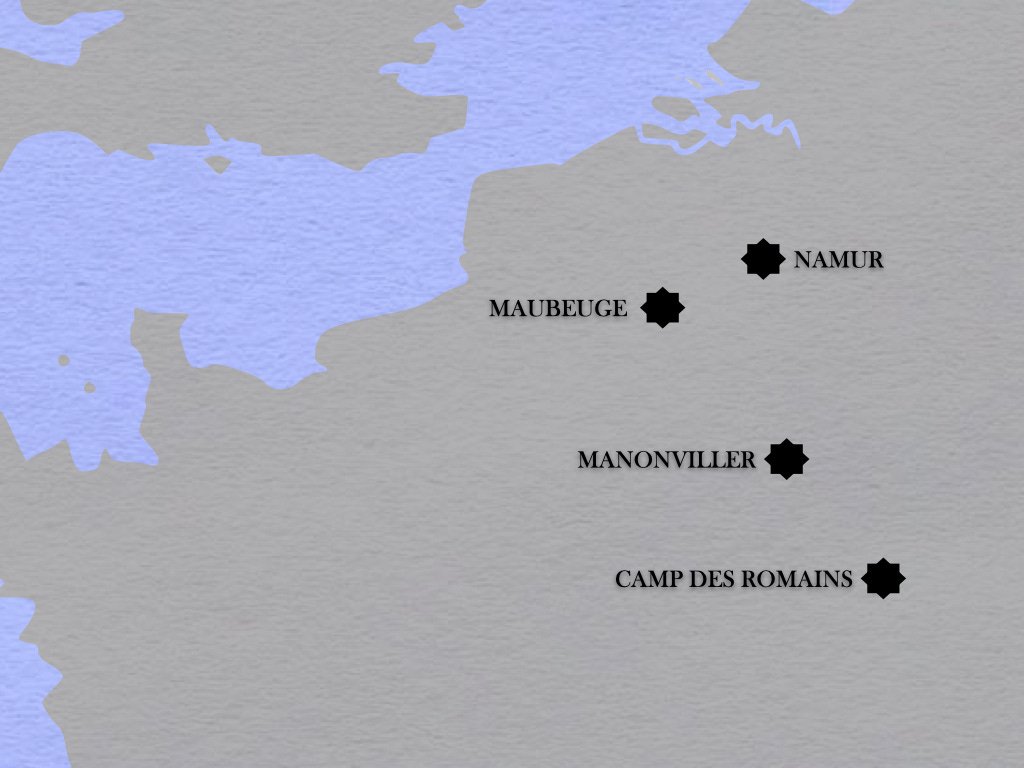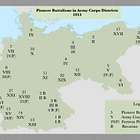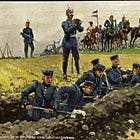Fortress Pioneer Regiments in August and September of 1914
The German Army of World War I
Welcome to the Tactical Notebook, where you will find five hundred or so tales of armies that are, armies that were, and armies that might have been. If you like what you see here, please share this article with your friends.
In the course of the mobile operations of August and September 1914, the fortress pioneer regiments operated as complete units under the direct control of the senior engineer officers of the various armies on the Western Front. The two fortress pioneer regiments (Pionier Regiment 24 and Pionier Regiment 25) of the Second Army, for example, were kept together as a single four-battalion entity – a de facto engineer brigade – throughout the first few weeks of the war.
Between 22 and 24 August 1914, this force stood ready to assist the Guard Reserve Corps in the taking Belgian fortress of Namur. On 26 August, it came under the operational control of the formation (VII Reserve Corps) assigned the task of besieging the French fortress of Maubeuge. (In neither case did the pioneers see much in the way of action. Both Namur and Maubeuge surrendered before the German gunners had finished their preparatory bombardments.)
Further south, the two fortress pioneer regiments of the Sixth Army (Pionier Regiment 19 and the all-Bavarian Bayerischen Pionier Regiment) took part in the siege of Manonviller, the largest of the French barrier forts. Once again, however, the defending garrison surrendered before the Germans had finished the preliminaries to the assault.
In the vicinity of Verdun, the German Fifth Army began the war with two fortress pioneer regiments and an area of operations that was full of barrier forts. On 2 September 1914, this army was given the task of taking three of these forts – Fort Troyon, Fort les Paroches, and Fort Camp des Romains. The first of these to be invested – Fort Troyon – proved to be a much tougher nut to crack than either the Belgian border forts or Manonviller. It withstood bombardment for six days, holding out until a change in the larger operational situation led the Germans to give up their attempt to take it.
Fort les Paroches was even more fortunate. Thanks to its location on the left bank of the Meuse and the resistance of Fort Troyon, it escaped investment by the Fifth Army. This left Fort Camp des Romains as the only French fort along the Franco-German frontier to be assaulted by German troops in 1914.
Ironically, both the preparatory siege works in front of Fort Camp des Romains and the assault itself were carried out by the “ordinary” pioneers. (The German attack against Fort Camp des Romains began on 22 September 1914, two weeks after a reshuffling of German forces had put it into the sector of the recently formed Army Detachment Strantz. As the latter formation had no fortress pioneer regiment in its order of battle, it had to make do with field pioneer companies taken from the garrison of the fortress of Metz.)

The premature surrender of so many of the French and Belgian border fortifications deprived the fortress pioneer regiments of any substantial opportunity to demonstrate their peculiar skills in the course of the period of mobile warfare that preceded the Battle of the Marne. After the Battle of the Marne, the shifting of the German center of gravity from Eastern France to Western Belgium created an operational situation in which no permanent fortresses stood in the path of the advancing German armies. This meant that the first two months of the war in France and Belgium were ones which the men of the fortress pioneer regiments enjoyed no opportunities to practice the definitive aspects of their craft.
Sources:
Freiherr Ludwig von Gebsattel Von Nancy bis zum Camp des Romains 1914 (Berlin: Gerhard Stalling, 1926)
Julius Rébold (Jean-Paul Waechter, translator) La Guerre de Forteresse 1914-1918 (Paris: Payot, 1936)
For Further Reading:







I think it says a lot about a unit, that when they show up, the enemy immediately surrenders en masse.